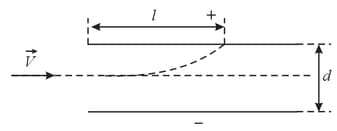Two point-like charges are positioned at points and . The field strength to the right of the charge on the line that passes through the two charges varies according to a law that is represented schematically in the figure accompanying the problem (without employing a definite scale). The field strength is assumed to be positive if its direction coincides with the positive direction on the axis. The distance between the charges is . Find the signs of the charges and, bearing in mind that the field strength at a point is zero, the ratio of the absolute values of charges and and the coordinate of the point where the field strength is maximal.
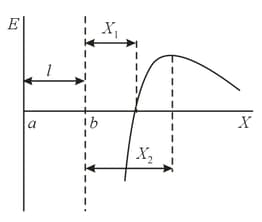


Important Questions on Electrostatics
Two mutually perpendicular straight conductors carry evenly distributed charges with linear densities and . Among the lines of force representing the field generated by these conductors there is a straight line passing through the point of intersection of the conductors. At what angle with respect to the conductor with the charge density does this line pass?
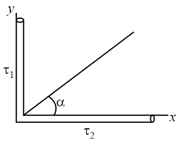
An infinitely long straight conductor carrying a charge with a linear density and a point charge - are at a certain distance from each other. In which of the three regions (, or ) are there points that () lie on the line passing through the point charge perpendicular to the conductor and () at which the field strength is zero?
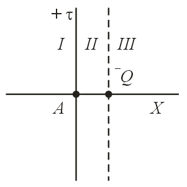
Two mutually perpendicular infinitely long straight conductors carrying uniformly distributed charges of linear densities and are positioned at a distance from each other. How does the interaction between the conductors depend on ?
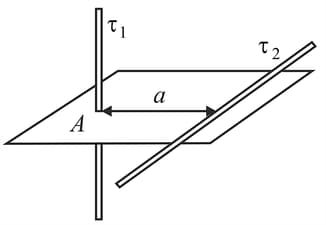
At a certain distance from an infinitely long straight conductor with a uniformly distributed linear charge there is a dipole with an electric moment directed along the line of force representing the field generated by the conductor at the point where the dipole is located. Assuming the arm of the dipole is very small compared to the distance , find the force with which the field acts on the dipole.
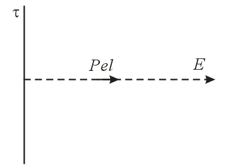
The figure shows the schematic of an absolute electrometer. The potential difference that is to be measured is applied between the plates and , with the upper plate connected to one arm of a balance beam. The pan connected to the other arm is loaded with weights until balance is achieved, that is, when the upper plate begins to move upward. In this way the force acting between the charged plates is measured, and this enables one to determine the magnitude of the potential difference between the plates. It the equilibrium in the electrometer stable or unstable?

A small thin metal strip lies on the lower plate of a parallel-plate capacitor positioned horizontally. The voltage across the capacitor plates is increased gradually to a value at which the electric force acting on the strip becomes greater than the strip's weight and makes the strip move toward the upper plate. Does the force acting on the strip remain constant during the lifting process?
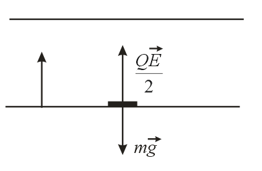
Into the region of space between the plates of a parallel-plate capacitor there flies () an electron and () a negatively charged ion with a velocity directed parallel to the plates. Both the electron and the ion have received their initial kinetic energy by passing the same potential difference , and the potential difference across the capacitor is . The distance between the plates is . Which of the two particles will travel a greater distance before hitting the positively charged plate if both fly into the capacitor at a point that is exactly in the middle of the distance between the plates?
